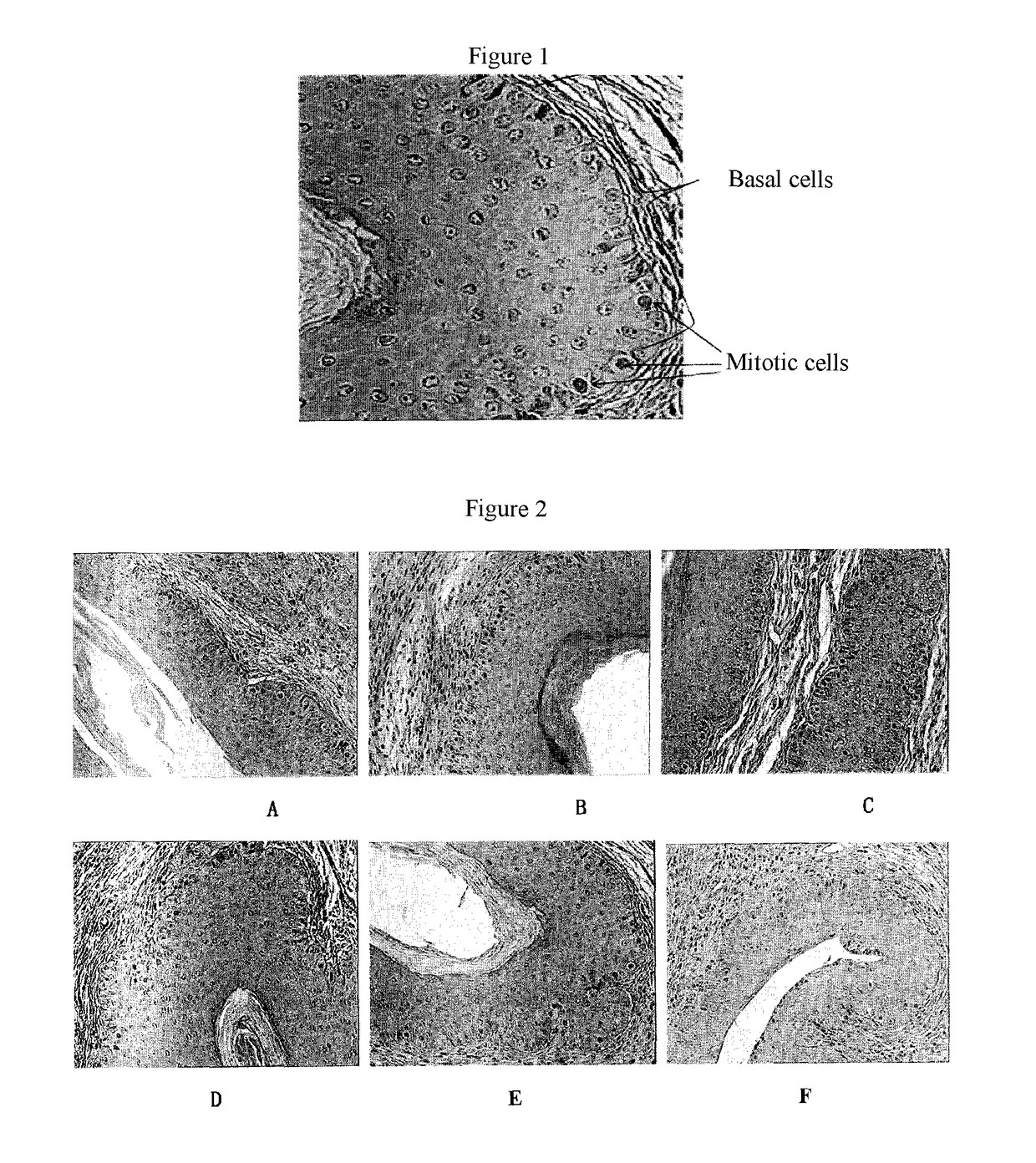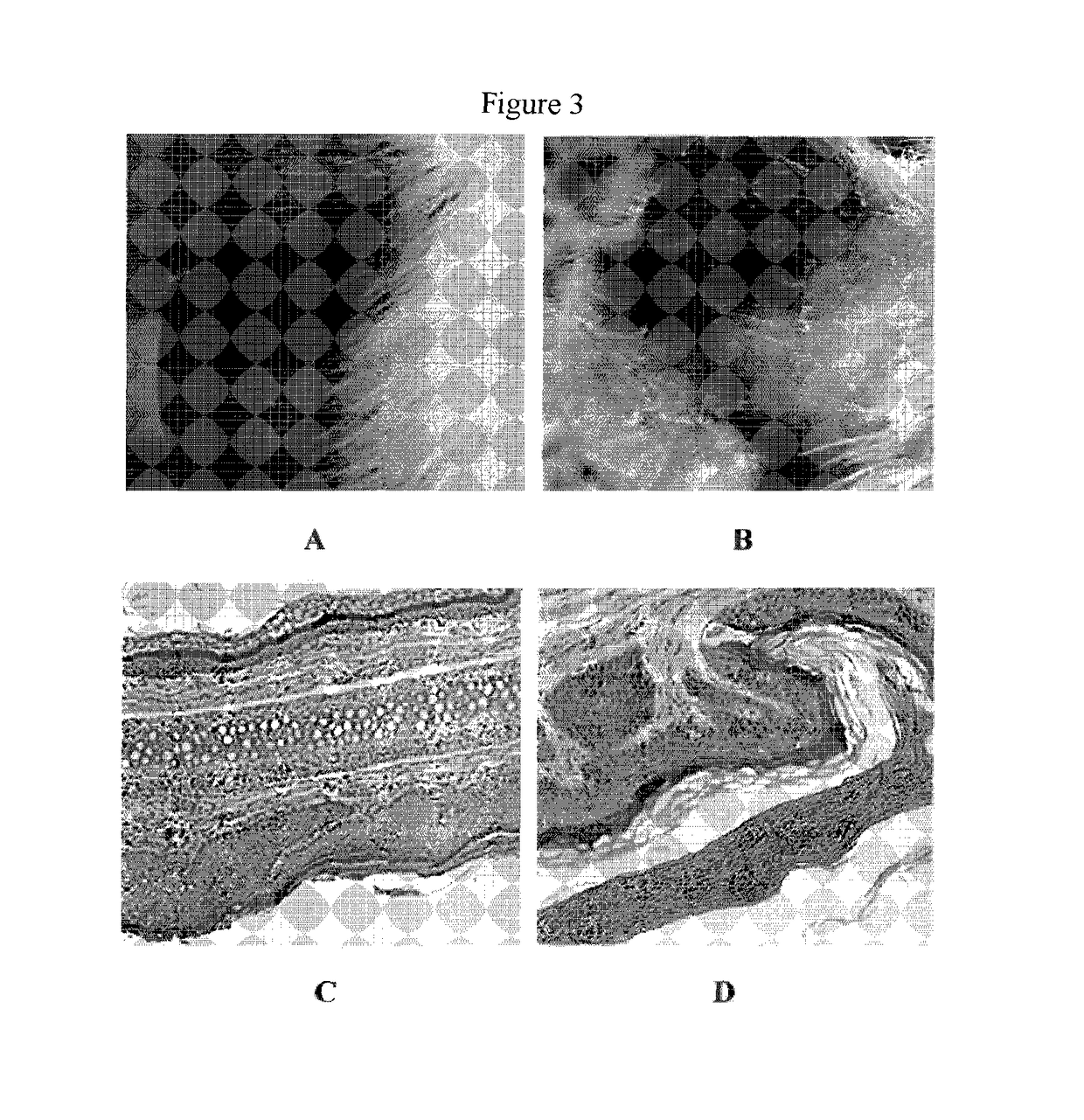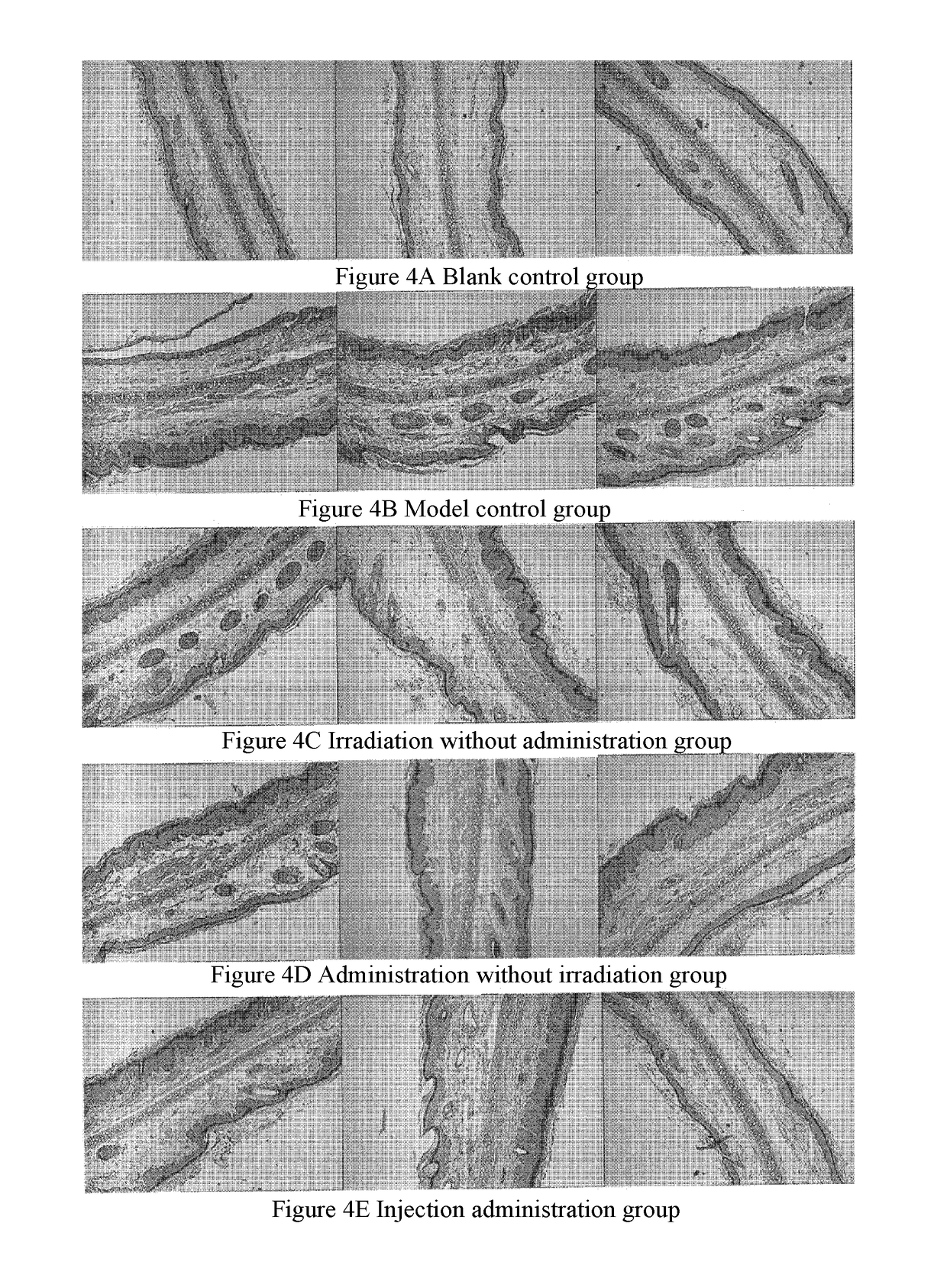Use of α-(8-quinolinyloxy) mono-substituted phthalocyanine zinc for treatment of psoriasis
a technology of psoriasis and phthalocyanine zinc, which is applied in the field of use of a photodynamic therapy of (8quinolinyloxy) monosubstituted phthalocyanine zinc for the treatment of psoriasis, can solve the problems of difficult topical treatment to produce a better, severe affecting the quality of life of patients, and difficult cure, etc., to achieve good therapeutic effect on propranolol
- Summary
- Abstract
- Description
- Claims
- Application Information
AI Technical Summary
Benefits of technology
Problems solved by technology
Method used
Image
Examples
Embodiment Construction
[0018]1. Effect of α-(8-quinolinyloxy) mono-substituted phthalocyanine zinc on the survival rate of HaCaT cells.
[0019]HaCaT cell line, a cell line of normally mutated and immortalized human keratinocyte, is one of the most wildly used cell models for the currently study of psoriasis. As compared with primary cultured keratinocytes, HaCaT cells have similar biological properties, but its operation is simpler.
[0020]HaCaT cells were routinely cultured in RPMI-1640 medium containing 10% fetal bovine serum at 37° C. in a 5% CO2 incubator. The cells were harvested in logarithmic growth phase, digested with 0.25% trypsin (containing EDTA), adjusted to a cell density of 2×105 cells / mL and seeded in a 96-well plate, 100 μL per each well; after incubation for 24 hours, α-(8-quinolinyloxy) mono-substituted phthalocyanine zinc was added at concentrations of 0.001 μg / mL, 0.01 μg / mL, 0.1 μg / mL, 1 μg / mL and 10 μg / mL respectively and three complex wells were set for each concentration. A blank cont...
PUM
| Property | Measurement | Unit |
|---|---|---|
| wavelength | aaaaa | aaaaa |
| absorption wavelength | aaaaa | aaaaa |
| absorption wavelength | aaaaa | aaaaa |
Abstract
Description
Claims
Application Information
 Login to View More
Login to View More - R&D
- Intellectual Property
- Life Sciences
- Materials
- Tech Scout
- Unparalleled Data Quality
- Higher Quality Content
- 60% Fewer Hallucinations
Browse by: Latest US Patents, China's latest patents, Technical Efficacy Thesaurus, Application Domain, Technology Topic, Popular Technical Reports.
© 2025 PatSnap. All rights reserved.Legal|Privacy policy|Modern Slavery Act Transparency Statement|Sitemap|About US| Contact US: help@patsnap.com



